We use cookies to ensure you get the best browsing experience. By continued use, you agree to our privacy policy and accept our use of such cookies. For further information, click FIND OUT MORE.
“I was a ticking time bomb. One heart attack could be my last.”
Pastor Rene felt his heart skip a beat after confirming from his doctor that he had coronary heart disease. What only started with shortness of breath when climbing up the stairs turned out to be something far more serious, and he was not prepared for the cost of it all.
An angiogram procedure in January 2019 revealed that his coronary arteries were blocked due to plaque buildup.
“It says na ‘yung aking right ventricle was actually completely blocked and ‘yung aking left ventricle was 80% blocked, so 20% na lang ang natitira,” he recalled.
(My right ventricle was actually completely blocked and my left ventricle was 80% blocked, so only 20% remained unblocked.)
“Nakita na masyadong maraming blocked na arteries. In fact, nakita nila sa angiogram na dahil barado na ‘yung right ventricle, naghanap na ng ibang malulusutan ‘yung dugo. Para na siyang Christmas tree na nag-sanga sanga na,” he added.
(The angiogram revealed that many of my arteries were blocked. Because the right ventricle was already blocked, my blood was looking for another path to get through the heart. The doctor described it as like a Christmas tree that has branched out.)
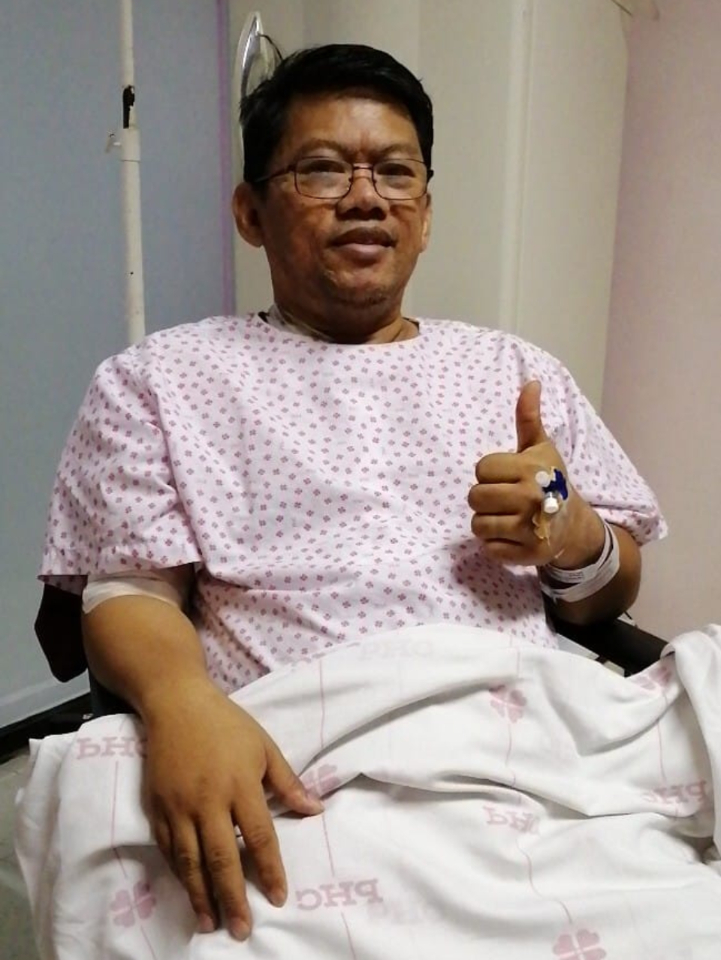
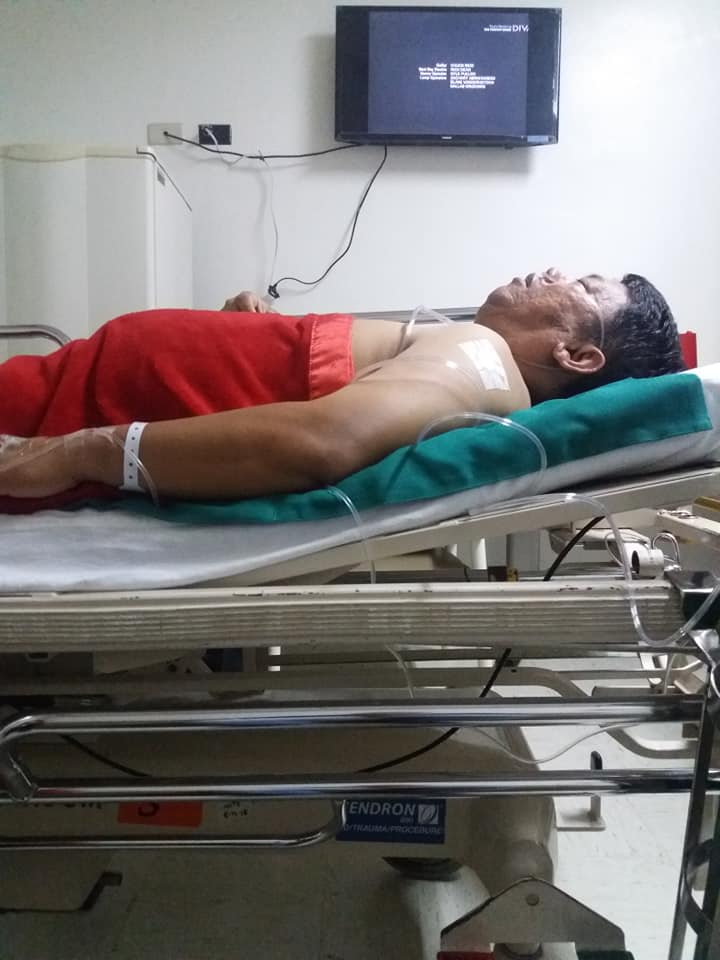
Philippine Heart Association (PHA) director Dr. Lourdes Ella Santos said that ischaemic heart disease or cardiovascular disease remained the number one killer of Filipinos, even before the COVID-19 pandemic hit the country.
There were 76,901 people killed due to ischaemic heart diseases from January to August 2023 alone, according to the Philippine Statistics Authority, which accounted for 19.1% of the total deaths in the country. Neoplasms were the second leading cause of death in Filipinos, followed by cerebrovascular diseases.
Symptoms of coronary heart disease include angina or chest pain, shortness of breath, and weakness. However, once these symptoms start to manifest, Dr. Santos warned that the blockage in the heart’s arteries may already be significant, and may thus need medical intervention.
“Ito’y parang hose na may kalawang. Kapag umabot na sa puntong ‘yung kalawang ay sobrang tindi na, hindi na makadaloy ‘yung tubig, medyo late na ‘yun in terms of treatment. So gusto mo maaga pa lang, either bahid bahid pa lang ‘yung kalawang, may gagawin ka na para malinisan o ‘wag i-allow na mag-deposit ‘yung kalawang,” she explained.
(It’s like a rusty hose. When the rust has become so thick, the water can no longer flow—that’s already a bit late in terms of treatment. So as early as possible, we want the hose to get cleaned and not let the rust accumulate.)
Indeed, for Rene, the diagnosis was a bit late. His cardiologist immediately advised him to undergo a Coronary Artery Bypass Grafting (CABG) as one heart attack could already cost his life.
And just like any other normal patient, Rene, a father of three who were all still studying back then, initially asked how much he had to draw from his pocket for the operation.
At the government-owned Philippine Heart Center (PHC), he said around P850,000 was needed for his heart bypass surgery. The cost could even double when done in a private hospital.
“No. I didn't have that amount of money,” he admitted.
“I was a pastor of a small church and at the same time working in a non-governmental organization, and so basically, I couldn’t afford it.”
Under the PHC’s Surgical Package Deal, various kinds of CABG procedures range from P405,000 to as much as P1.1 million, depending on whether it’s a private, semi-private, or ward plan.
But why does a heart bypass surgery cost this much? Think of the EDSA traffic.
Santos, who is also a clinical associate professor at the Philippine General Hospital’s preventive cardiology section, said that to have a smooth sailing ride despite the congestion of vehicles, surgeons have to build an alternative route—in this case, a vein harvested from the leg—that would serve as a bypass.
“Binubuksan namin ‘yung dibdib, nilalabas ang puso, tapos ang ginagawa namin, bina-bypass namin,” she said.
(We open the chest, we take out the heart, and we make a bypass.)
“Habang ginagawa namin ‘yung bypass, hinihinto namin ‘yung puso. Tapos lahat ng dugo na usually dumadaan sa puso, pupunta ‘yan sa isang machine. Iikot siya the entire time, tapos ibabalik namin pagkatapos na kaming gumawa nung bypass sa puso,” she added.
(While we do the bypass, we stop the heart. All the blood that usually passes through the heart goes to a machine where it will circulate during the entire operation. We return it once the bypass is done.)
In essence, a heart bypass surgery is a tedious procedure that would usually take four hours, depending on how complicated the case is. During the operation, the heart literally stops beating and it is only after that that doctors shock it back to life.
Several healthcare workers—from nurses to surgeons—also have to handle the patient, ensuring that his or her heart is in a better state after the operation. Admission to the intensive care unit after the surgery for close monitoring is also another factor to be considered. Normally, a patient undergoing the CABG has to stay in the hospital for eight days.
“I was a pastor of a small church and at the same time working in a non-governmental organization, and so basically, I couldn’t afford it.”
Good thing, along with the Department of Health’s (DOH) continued push for universal health care, the Philippine Health Insurance Corporation (PhilHealth) offers benefit packages for case type Z conditions.
Eligible for this package are patients who have catastrophic illnesses and health conditions that require expensive treatments and hospitalizations.
Under the Z Benefit package, PhilHealth covers P550,000 worth of expenses for the CABG or heart bypass surgery for eligible members aged 19 to 70.
For children aged 1 to 10, the state health insurer pays P320,000 for the total correction of Tetralogy of Fallot—a congenital defect that affects the normal blood flow through the heart.
PhilHealth also shoulders a P250,000 worth of surgery for kids with Ventricular Septal Defect—another birth defect showing a hole in one’s heart.
Indigent members, domestic workers, senior citizens, and those who are considered sponsored (paid by another person, government agency, or private entity) and lifetime (a retired individual who has paid at least P120,000 monthly premium contributions), including their qualified dependents, are also eligible under the “No Balance Billing” policy.
Rene said that the Z Benefits became a big help for his operation as it covered half of his hospital bills. Since he also had health insurance, he said his bills went down from the P850,000 initially asked of him to around P350,000.
Although the remaining balance was still a bit heavy for him, he said he was able to raise the P350,000 and even more through the help of his churchmates, the school he previously worked in, and some people whom he didn’t even know personally. He also surrendered all his burdens to the Lord, hoping He would provide for whatever he was short of.
Before this milestone program of the government was launched in 2012, Filipinos with serious illnesses carried a much heavier load when it came to hospital expenses, with underprivileged ones having to greatly rely on loans and donations from generous souls.
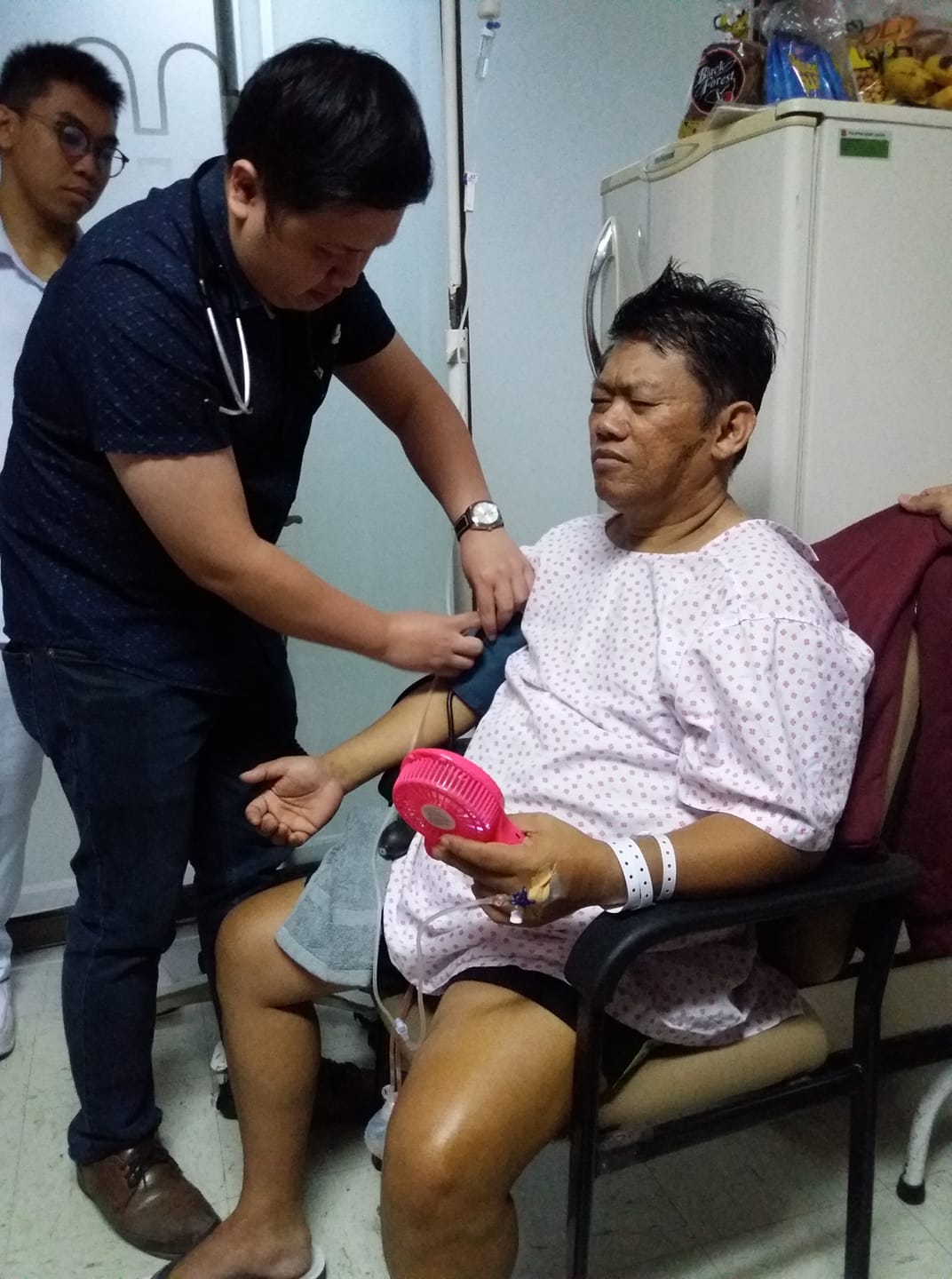
In 1998, Lei’s life turned upside down when she learned her newly born infant had a hole in her heart. As someone who had irregular menstruation, Lei was unaware that she was already in her first trimester when exposed to a co-worker who had German measles, and students who had mumps and chickenpox.
When baby Rose was born, the doctor said her heart had a wheezing sound and she was turning blue. She also had to be fed in a sitting position, unlike any other healthy newborns cradled by their moms.
Rose was scheduled for an open heart surgery also at the PHC shortly before she turned two years old for the closure of her ventricular septal defect. Lei, a private school teacher, tried to make ends meet to raise P1.7 million for her daughter’s operation, medicines, and milk in the hospital.
“Sabi niya, nung nalaman niyang may sakit ako, parang at first, hopeless siya kasi first, anak niya and bata pa. At the same time, financially, big amount ‘yung need i-prepare. Pero she was determined to find a way to give me a lease on life,” Rose recalled.
(She told me that when she found out I was sick, she became hopeless at first because I was still little. At the same time, a large amount of money needed to be prepared. But she was determined to find a way to give me a lease on life.)
According to Rose, her mother had to send letters to close relatives and friends, and even sold accessories just to raise over a million pesos for her surgery. Some of her family members also applied for loans, and the church where her family volunteered also pitched in.
She was also granted social service assistance by the PHC given that she and her family had to travel regularly from Tacloban City to Metro Manila for her check-ups, laboratory exams, and operation.

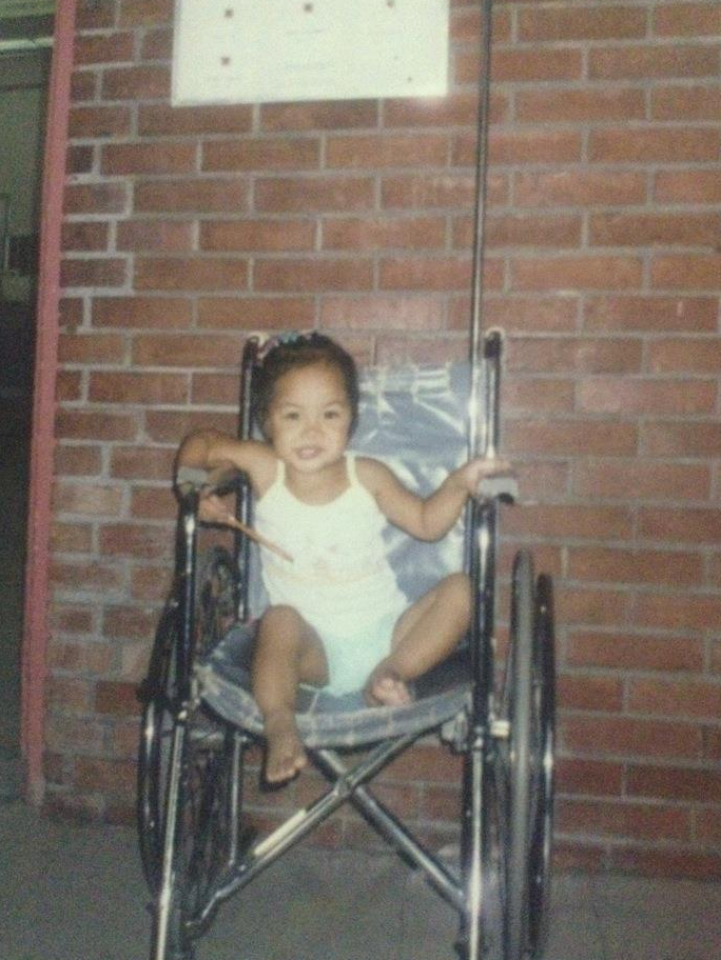
According to Dr. Elfred Batalla, who’s the head of Southern Philippines Medical Center Heart Institute in Davao City, the lack of health workers, laboratory services, and medicines indeed remains a challenge for provinces.
“It’s very difficult for patients. I have patients who travel eight hours from their place just to have a good diagnostic procedure and good management of their disease. On our part as physicians, that is a sad thing,” he said.
Batalla also lamented the poor situation of public hospitals where healthcare workers get overwhelmed by the influx of patients and facilities are usually scarce.
“Kulang ang rooms ng admitant. Nandon lang sa emergency room. Kapag napuno na ang emergency rooms, nasa labas na ang mga patients,” he added.
(Rooms for those admitted are lacking. Most of them are in the emergency room. Once the emergency room gets full, patients have to be placed outside.)
But since a physician in Leyte advised to have Rose checked in the PHC which is located in Quezon City to have a full-scale assessment of her disease, her family braved going back and forth from Tacloban to save her life.
“Nagkaro’n ng fears na I won’t make it through the surgery, but thankfully, naging okay naman. Although, ang sabi ng doctor, likely hanggang nine years old lang ako.”
Came the big day. Rose said there were a few complications when the surgery started, including her having to be revived two hours in. The hole in her heart was also not completely patched, as decided by her doctors.
“Sabi ng doctors, parang nag-leak ‘yung patch… So after nung procedure, ‘yung hole, hindi siya totally closed. Aside from that, kasi lumalaki ka rin so nage-expand ka, so medyo mahirap talaga siya na i-fully close. Hindi na nila in-extend ‘yung procedure,” she said, citing stories from her mother.
(The doctors said that the patch leaked. So after the procedure, the hole in my heart was not totally closed. And since I was still about to grow, my heart was expected to grow as well, so it was difficult to completely seal the hole. Due to this, the doctors decided not to extend the procedure.)
“Nagkaron ng fears na I won’t make it through the surgery, but thankfully, naging okay naman. Although, ang sabi ng doctor, likely hanggang nine years old lang ako,” she continued.
(There were fears that I wouldn't make it through the surgery, but thankfully, it turned out okay. However, the doctor said I might only reach nine years old.)
But life still has so much in store for a dauntless girl. Now at 25, Rose already has a Juris Doctor degree and is looking forward to being a full-fledged lawyer.
She owed it mostly to her mother Lei, who considered her survival a miracle. Rose shared that Lei still gets emotional during her birthdays and whenever she has an achievement, remembering all the sacrifices and struggles they faced during her younger years.
“Dahil nagkaron ng age limit or kailangan mag-ingat, very special talaga sa’kin ang birthday kasi it’s another year, nadadagdagan ang age ko. Parang mas napo-prove ko sa universe na mas nagtatagal years ko,” she said.
(Because there was an age limit for me or I was told to be careful, my birthdays have become really special to me because it's another year and I’m getting older. It’s like me proving to the universe more that my life could get longer.)
“Diba may ibang tao ayaw nilang tumatanda? But for me parang blessing ‘yung growing older kasi parang hindi naman siya in-expect o akala ng iba na hindi aabot ng ganyan.)
(Some people don’t want to get old, but for me, growing older is a blessing because that wasn’t expected of me.)
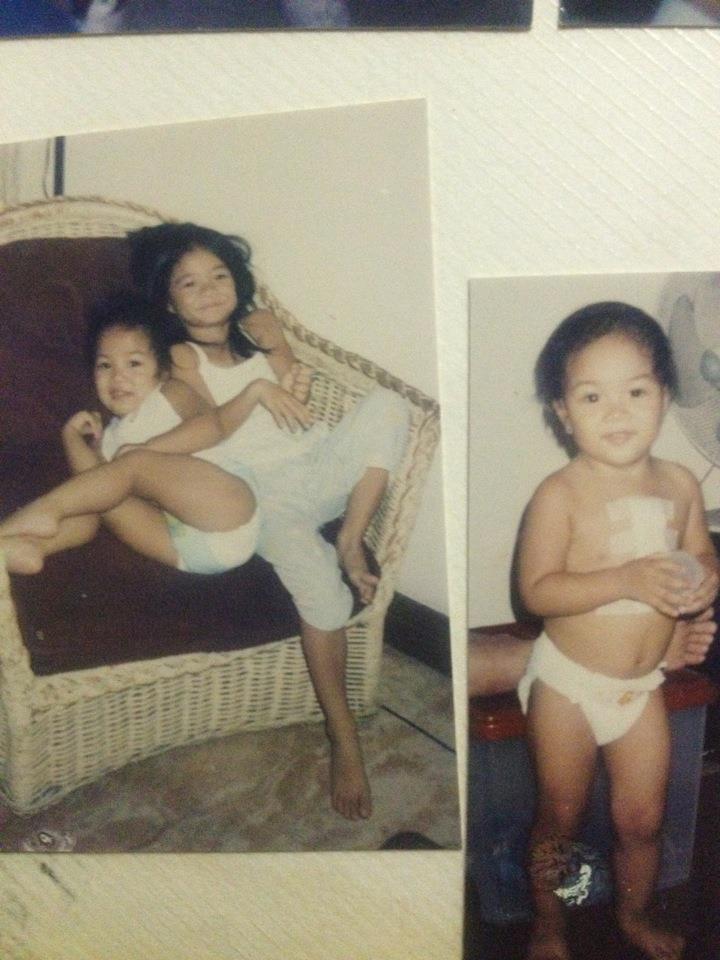
In this month of love, one thing that people need to remember is that taking care of one’s heart doesn’t really have to be expensive.
Department of Health (DOH) Assistant Secretary and deputy spokesperson Dr. Albert Domingo said that further debilitation of heart diseases can be prevented by avoiding risky behaviors such as smoking, drinking alcohol, and having an unhealthy diet and sedentary lifestyle.
Good habits, on the other hand, such as including fruits and grains in the diet and having regular exercise could improve heart health.
“Proper and consistent administration of medications as recommended by a physician is also helpful for maintaining a healthy heart,” Dr. Domingo added.
Batalla also stressed the importance of early detection as it will prevent the occurrence of life-threatening cardiovascular events and hospital admissions.
“An ounce of prevention is better than cure… Kung ma-detect na ‘yung sakit mo late na, gumastos ka na sa ospital tapos nagkaron ka na probably ng irreversible damage sa puso mo,” he said.
(If your disease is detected too late, you would have to spend money in the hospital and you probably might have irreversible damage to your heart.)
With the Universal Health Care (UHC) law in effect, the DOH is eyeing to establish 19 functional cardiovascular centers across the country by 2028. This includes one national cardiovascular specialty center, five advanced comprehensive cardiovascular specialty centers, and 13 basic comprehensive specialty centers.
This would be a great deal, especially for Filipinos suffering from heart disease as quality healthcare would be more accessible to them wherever they are in the Philippines.
To date, including the Philippine Heart Center, there are only nine functional cardiovascular centers in the country: Mariano Marcos Memorial Hospital and Medical Center, Dr. Paulino J. Garcia Memorial Research and Medical Center, Western Visayas Medical Center, Vicente Sotto Memorial Medical Center, Eastern Visayas Medical Center, Northern Mindanao Medical Center, Southern Philippines Medical Center, and Cotabato Regional and Medical Center. —LDF/NB, GMA Integrated News
